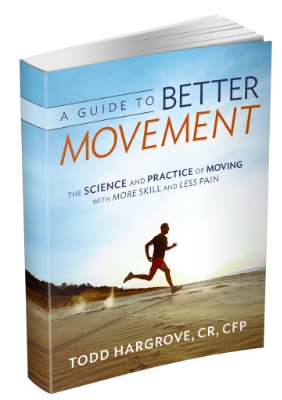Highlights of 2014
Thanks for reading the blog this year everyone! Here is a brief review of highlights from 2014, followed by a preview of coming events in 2015.
Highlight #1: My first book
Without a doubt, publishing A Guide to Better Movement was one of the most rewarding things I have ever done.
The book sold well and continues to sell well. Within a few months, I received an offer from a respectable publisher to buy the rights (which I declined.) A few months later, I sold the translation rights to a Korean publishing company. It’s all very flattering, and pretty weird too.
The best part is the feedback from readers. There are forty reviews on Amazon, most of which are five stars. And I have received a ton of nice e-mails from readers.
People in the movement business - PTs, trainers, massage therapists, yoga instructors, chiropractors - have told me they found the book very helpful in their practice.
Chronic pain patients and athletes said the movement lessons helped them with their function or pain.
And perhaps most pleasing is the positive feedback from various experts in the subject matter, such as physical therapy professors, neuroscience PhDs, and pain researchers. It’s great to receive validation from the people who truly know their stuff.
For me, this all means that I accomplished my main goal with the book, which was to organize and translate a lot of confusing, disconnected and esoteric information into a readable book that people can use to learn more about movement and pain.
I did not originate most of the ideas in the book. (And neither did most of the people I learned them from!) And I am not a true expert in the subject matter. (At least not in the sense of being a PHD or researcher.) So what value do I add as a writer on these subjects? The value is in taking complex information from a wide variety of fields, organizing it, integrating it, and translating it accurately into terms that are simple and practical.
If there is one common thread to the positive feedback I’ve received about the book, it’s that it makes complex ideas easy to understand and apply, without sacrificing precision and accuracy. Erson Religioso at the Manual Therapist blog wrote a very nice review and offered a one sentence summary that I was proud to hear: "All of the knowledge, with none of the pretentiousness."
Thanks Erson, that is just what I wanted to do. And thanks to all my other readers for the support and encouragement.
Highlight # 2: Learning from others
One clear message from the study of pain science is that biomechanics are not everything when it comes to pain. And yet, most varieties of movement therapy involve a good deal of attention to biomechanical factors and quality of movement. Thus, many questions arise about trying to help people feel better by moving better. For example:
Do biomechanics really matter for pain? Or is pain all in the brain?
Is there one right way to move? Or is one way of moving just as good as another? Or is it all about variability?
Can we really identify movement “dysfunctions" and make “corrections"? Or is it all too complex and individual? And if we can identify dysfunctions, how do we avoid creating unnecessary fear of movement and nocebos?
Are we throwing out the biomechanical baby with the pain science bathwater? And oh no, did the baby poop in the tub?!
My attempt to answer these questions is what turned into this blog and my book. But of course my thinking continues to evolve, and was very much influenced this year by many other brilliant people that are also addressing these tough questions.
In that regard, I would like to thank many of my colleagues who have provided me with a lot of great information and food for thought on the intersection of biomechanical corrections with an understanding of pain science, including Jason Silvernail, Gregory Lehman, Ben Cormack, Sigurd Mikkelsen, Paul Ingraham, Jonathan Fass, Craig Liebenson, Philip Snell, Christopher Johnson, Roderick Henderson, and many others. I look forward to learning more from you in 2015.
Highlight #3: Talking at the Pain BC Conference
I was honored to speak at the BC Pain conference in March 2014. Some excellent speakers included Diane Jacobs, Jan Dommerholt and Neal Pearson. I did a one-hour talk focused on the Fedenkrais Method which you can check out here. I think it really went really well as please the reception.
Highlight #4: Writing
I didn't write as many posts in 2015, partly because of the time I spent on the book, and partly because I spent more time on each post. This lead to some very good posts, especially A Systems Perspective on Chronic Pain, Graded Exposure, Does Posture Contribute to Low back Pain and Do You Even Mobility?
What’s New in 2015
I look forward to doing some speaking and teaching this year. I already have a few things in the works, and I will let you know when dates get finalized.
I also have plans for a second book. Stay tuned.
I also would like to do more Feldenkrais style movement lessons - either in audio, video or print. What would you like to see?
Thank again for reading and best wishes for better movement in 2015!


